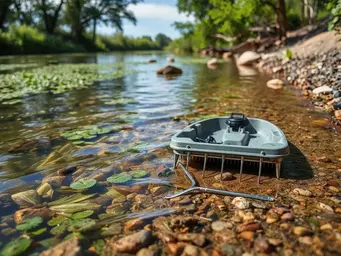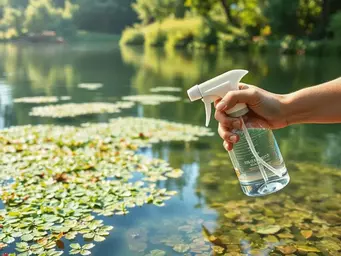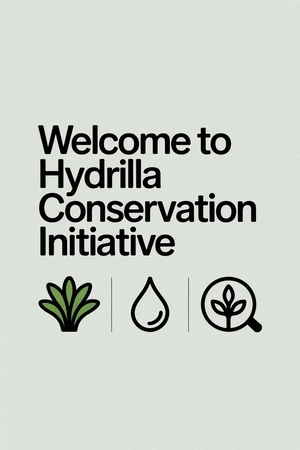Invasive species like hydrilla can drastically alter local ecosystems, but awareness and proactive management can help mitigate their impact. Are you ready to learn how to take action in your community?
What You Will Learn
- Hydrilla verticillata is an invasive aquatic plant characterized by its fast growth and ability to thrive in various water conditions.
- This plant can outcompete native species, leading to reduced biodiversity and altered aquatic habitats.
- Understanding hydrilla's characteristics is crucial for effective identification and management strategies.
- Continued research and public engagement are vital in combating hydrilla invasions and fostering community involvement.
- Local conservation efforts, such as cleanups and educational workshops, empower individuals to contribute to invasive species management.
The Multifaceted Impact of Hydrilla: A Visual Summary
This visual outlines the core characteristics, invasive impacts, and management strategies concerning Hydrilla, highlighting key areas of concern and action.
Hydrilla Characteristics
- ✓ Whorled leaves (5-7)
- ✓ Fast growth (25ft+)
- ✓ Vegetative reproduction
Invasive Impacts
- ✗ Reduced biodiversity
- ✗ Altered habitats
- ✗ Water quality degradation
Key Management Areas
Research, Awareness & Local Action
Research Focus Areas
- ● Ecological Studies
- ● Management Techniques
- ● Public Engagement
Community Action Examples
- ■ Volunteer for Cleanups
- ■ Participate in Workshops
- ■ Advocate for Policy Changes
Understanding Hydrilla: An Invasive Aquatic Species
In the realm of aquatic ecology, hydrilla verticillata stands out as a particularly concerning invader. This aggressive aquatic plant, often mistaken for a harmless addition to our waterways, can quickly dominate and disrupt local ecosystems. Its ability to proliferate rapidly makes it a formidable foe for environmental professionals like us at the Hydrilla Conservation Initiative.
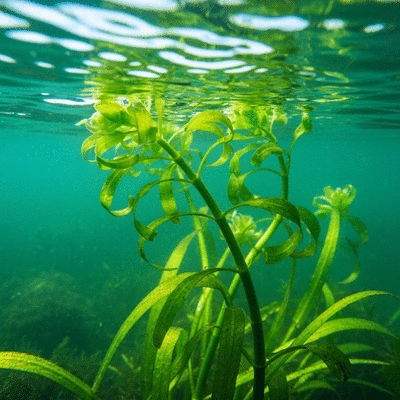
Hydrilla is characterized by its whorled leaves, typically found in clusters of five to seven, and its flexible stems that can grow to lengths of over 25 feet. Have you ever observed how well it thrives in both still and flowing waters? This adaptability is one of the many reasons why hydrilla poses such a significant threat to our native flora and fauna.
Defining Hydrilla verticillata and Its Characteristics
Hydrilla is a submerged aquatic plant that can grow in a variety of water conditions, making it particularly resilient. Its features include:
- Whorled leaves: Typically appearing in groups of five to seven.
- Fast growth rate: Capable of reaching the surface in just a few weeks.
- Vegetative reproduction: It can spread through fragments, tubers, or turions.
Recognizing these characteristics is essential for proper identification and management. The more familiar we become with hydrilla, the better equipped we are to combat its spread!
The Invasive Nature of Hydrilla: Why It Matters
Understanding why hydrilla is considered invasive is crucial to appreciating its impact on our waterways. This plant can outcompete native species for resources, leading to:
- Reduced biodiversity: Native plants and animals struggle to survive when hydrilla takes over.
- Altered habitats: The dense mats formed by hydrilla can alter the physical structure of the ecosystem.
- Water quality degradation: Hydrilla can affect oxygen levels and water clarity, impacting aquatic life.
As environmental educators, it’s our responsibility to raise awareness regarding hydrilla's invasive nature and its wider implications for ecosystem health. What can you do in your community to educate others?
Hydrilla's Role as an Invasive Species in Aquatic Ecosystems
Hydrilla plays a disruptive role in aquatic ecosystems by forming dense mats that block sunlight and reduce oxygen levels in the water. This not only harms native plants but also affects fish populations and other aquatic organisms. The consequences ripple through the entire ecosystem, creating a chain reaction of negative impacts.
For instance, areas overrun by hydrilla may see a decline in fish species that rely on clearer waters for breeding and feeding. The introduction of hydrilla can thus pose a direct threat to local fisheries and recreational activities. Have you noticed changes in your local waterway? It might be time to investigate the health of your ecosystem!
We Want to Hear From You!
Have you noticed any changes in your local waterways due to hydrilla's presence? Share your experiences and thoughts below:
Summarizing the Challenges of Hydrilla Invasions and Management
Hydrilla invasions present a multitude of challenges that we must address with urgency. As an aquatic biologist, I’ve witnessed firsthand the complexity of managing hydrilla, and it’s clear that ongoing research and public awareness are crucial in tackling this issue. The more we understand hydrilla’s biology and ecology, the better equipped we are to develop effective management strategies.
It's essential to recognize that hydrilla does not just affect waterways; it also disrupts local economies and recreational activities. Maintaining a focus on continued research can help us uncover new management techniques and provide valuable insights for conservation efforts.
The Importance of Continued Research and Awareness
Research plays a pivotal role in our battle against hydrilla. With a deeper understanding of its spread and the factors that contribute to its invasiveness, we can implement better management practices. Here are several key areas where ongoing research is vital:
- Ecological Studies: Understanding hydrilla’s impact on native species and ecosystems.
- Management Techniques: Exploring innovative methods for controlling hydrilla populations. For example, research conducted at the University of Florida provides insights into stakeholder preferences for invasive aquatic species management, which can inform more effective strategies.
- Public Engagement: Encouraging community involvement in monitoring and reporting hydrilla sightings.
As part of the Hydrilla Conservation Initiative, I emphasize the importance of collaboration with researchers, conservationists, and local communities. Together, we can spread awareness and drive actionable change!
Addressing Economic Impact and Public Awareness in Management Efforts
The economic consequences of hydrilla invasions cannot be overlooked. From impacting fisheries to reducing property values near infested waters, the financial implications are significant. By raising public awareness about these issues, we can garner support for effective management strategies. Here’s how:
- Community Workshops: Hosting events to educate the public on hydrilla identification and management.
- Social Media Campaigns: Utilizing platforms to share information and resources about invasive species. For a comprehensive overview of how hydrilla poses a hazard and what research suggests, you can refer to this research summary on the NY Invasive Species Research Institute website.
- Partnerships with Local Businesses: Collaborating with stakeholders to promote sustainable practices.
By focusing on public engagement, we can foster a sense of shared responsibility and empower individuals to take action against hydrilla invasions.
Taking Action: How You Can Help Manage Hydrilla Spread
Every individual has a role to play in managing the spread of hydrilla. By getting involved, you can make a difference in your local ecosystem! Whether you're a seasoned environmentalist or just starting to learn about invasive species, there are numerous ways to contribute.
Getting Involved in Local Conservation Efforts
Participating in local conservation initiatives is an impactful way to help combat hydrilla. Here are some ways you can get involved:
- Volunteer for Cleanups: Join local organizations for waterway cleanups to remove debris and monitor for hydrilla. You can also learn more about specific regional efforts, such as the management of Hydrilla infestation in the Connecticut River, by reviewing relevant environmental assessments.
- Participate in Workshops: Attend educational workshops hosted by environmental groups to learn more about hydrilla management.
- Advocate for Policy Changes: Engage with local policymakers to support initiatives aimed at controlling invasive species.
Your participation not only supports local ecosystems but also strengthens our community's commitment to preservation!
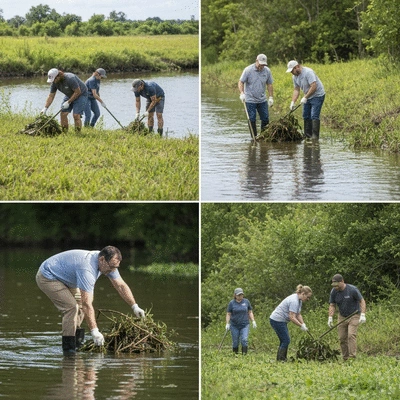
Resources for Learning More About Invasive Species Management
To effectively manage hydrilla, it’s crucial to equip yourself with knowledge. Here are some valuable resources that can help you:
- Hydrilla Conservation Initiative: Visit our website for identification tools, management tutorials, and policy updates.
- Local Universities: Check out research programs focused on aquatic biology and invasive species.
- Environmental Organizations: Engage with groups dedicated to conservation efforts and community education.
Empowering yourself with information makes you a more effective advocate for the ecosystems we cherish!
Understanding the Importance of Watershed Management in Prevention
Watershed management is vital in preventing hydrilla spread. Healthy watersheds act as a first line of defense against invasives. Here’s what to consider:
- Natural Filters: Wetlands and riparian zones filter pollutants and provide habitat for native species.
- Monitoring Water Quality: Regular testing helps identify issues that could exacerbate hydrilla growth.
- Community Involvement: Engaging local communities in watershed stewardship enhances conservation efforts.
By managing our watersheds effectively, we can protect them from invasive species like hydrilla and ensure vibrant ecosystems for future generations!
Frequently Asked Questions About Hydrilla
What is Hydrilla verticillata?
Hydrilla verticillata is an invasive aquatic plant known for its rapid growth and ability to thrive in diverse water conditions. It features whorled leaves, typically in groups of five to seven, and can grow over 25 feet long.
Why is Hydrilla considered an invasive species?
Hydrilla is considered invasive because it outcompetes native species, leading to reduced biodiversity, altered habitats, and degraded water quality. Its dense mats block sunlight and reduce oxygen levels, harming native plants and aquatic life.
How does Hydrilla spread?
Hydrilla primarily spreads through vegetative reproduction, meaning it can grow from fragments of the plant, tubers, or turions (specialized buds). This makes it highly resilient and difficult to control.
What are the economic impacts of Hydrilla infestations?
Hydrilla infestations can have significant economic impacts, including harming local fisheries, reducing property values near infested waters, and increasing costs associated with waterway maintenance and recreational activities.
How can individuals help manage Hydrilla?
Individuals can help manage hydrilla by volunteering for waterway cleanups, participating in educational workshops, advocating for policy changes, and raising public awareness through social media and community engagement. Supporting ongoing research and effective watershed management are also crucial.
Recap of Key Points
Here is a quick recap of the important points discussed in the article:
- Hydrilla verticillata is an invasive aquatic species known for its rapid growth and adaptability, posing significant threats to local ecosystems.
- Key characteristics include whorled leaves, a fast growth rate, and vegetative reproduction, making it essential to recognize for effective management.
- The invasiveness of hydrilla leads to reduced biodiversity, altered habitats, and degraded water quality, impacting native flora and fauna.
- Ongoing research is critical for developing innovative management techniques and engaging the public in monitoring and awareness efforts.
- Community involvement through workshops, social media campaigns, and partnerships can enhance public awareness and foster a collaborative approach to managing hydrilla.
- Effective watershed management plays a vital role in preventing the spread of hydrilla, ensuring healthy ecosystems for future generations.

